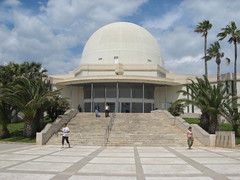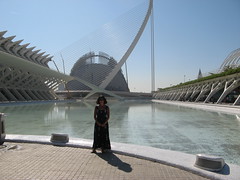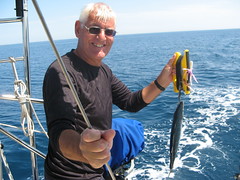ROGER'S BLOG
Torrevieja proved to be a good choice for overwintering on the Costa Blanca, the town has everything one needs, except charm! The Club Nautico offers friendly staff, immaculately clean facilities and a good, relatively cheap, restaurant. Sheila and I quickly settled into the routine of eating out every day as there are many cheap and interesting cafes and restaurants – it seemed to work out cheaper and easier than shopping and cooking on board. In addition, there are several well stocked and helpful chandleries which made the many maintenance jobs easier.
People who ask us how do you fill your time have, obviously, never lived on a boat. During the sailing season many things malfunction (the salt-water, high ultra-violet environment is not kind!), and most jobs are bodged pending a winter refit (see, for example, our earlier account of the blocked bog!). We arrived in Torrevieja in October and I only finished my job list in the following April! Among the tasks undertaken were the following:
(1) Drain outboard motor of petrol (it goes off if left over winter and coats the spark plug, preventing ignition) and change outboard oil;
(2) Drain and replace inboard engine oil. Fit new oil filter, diesel, and air filter;
(3) Engage mechanic to fix/replace malfunctioning fuel, oil pressure and water temperature gauges;
(4) Remove sails and engage sail maker to replace zip in stack pack and fit new sacrificial strip to headsail;
(5) Fit new compass, chart plotter and AIS system;
(6) Make new access panel for heads, replace and refit all head pipes and valves; including fitting new shower head and basin drain;
(7) Teak oil hand rails and cockpit grating;
(8) Varnish companionway and wash boards;
(9) Paint headlining in heads and aft cabin;
(10) Organize lift out, pressure wash, the fitting of new anodes and the polishing of topsides;
(11) Fit new bilge pump;
(12) Drain suitcase generator oil and petrol and replace oil;
(13) Clean and pickle water-maker;
(14) Grease rudder stock and stern gland;
(15) Remove and wash all halyards;
(16) Remove cockpit canopy;
(17) Fit new LED anchor and tricolor lights at masthead
(18) Grease all sea cocks
(19) Dose diesel tank with biocide (I use the Marine 16 product)
(20) Make and fit new plugs for sealing anchor and chain locker;
(21) Fit additional buoyancy bags to new “Seahopper” dinghy;
(22) Service winches and fit new spring (the old one was lost during a previous service!).
In addition to all this work, we enjoyed the company of three lots of visitors. The first were Diana and Graham, friends who we seduced into sailing some years ago (and who are still talking to us!), who visited us in October. Unusually, the weather was very bad and we only managed to go sailing for a few hours one morning, only to return to the Club Nautico in time to see a large waterspout head for the coast! Our other visitors were our friend Junko from our Spanish class in Seville and our daughter Jessica and her friend Ruth who came out to complete their PADI open water diving qualification in warmer conditions than the UK could offer.
We caught a bus to Alicante one day and saw the preparations for the first leg of the Volvo Ocean Race. When the boat was out of the water we hired a car to spend a few days in Granada.
 |
| Around the World Volvo Ocean Race in Alicante |
We enjoyed a good social life in Torrevieja; eating out and drinking with other overwintering sailors. I regret not having more time to practice sun sights from the South facing harbor wall and not sailing the new “Seahopper” in the sheltered waters of the harbor, but there will be other opportunities. As always, we set sail with both excited anticipation of new adventures in new places and the ever-present fear of the unknown.






